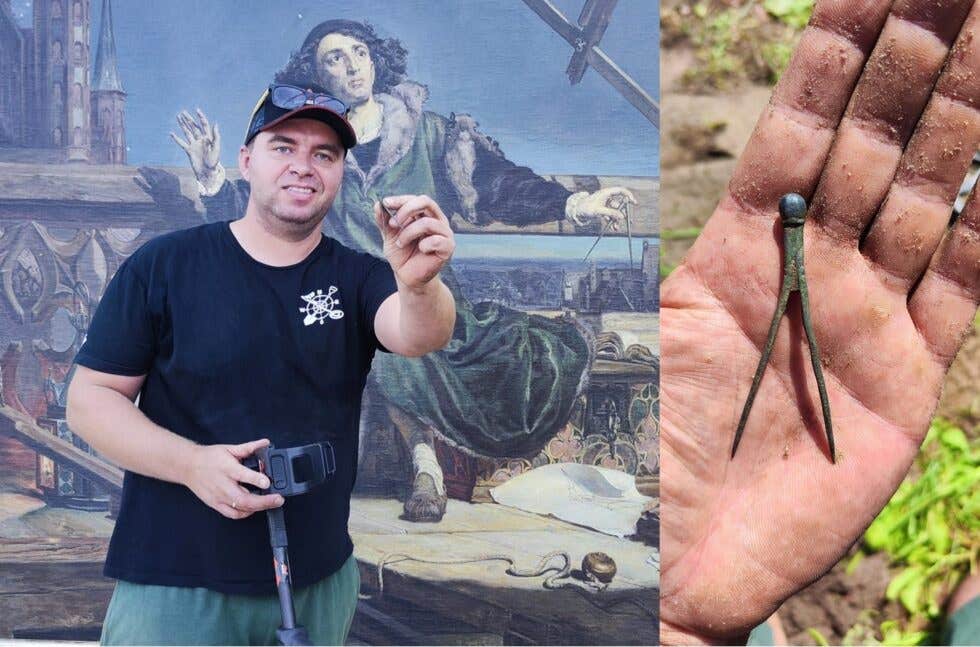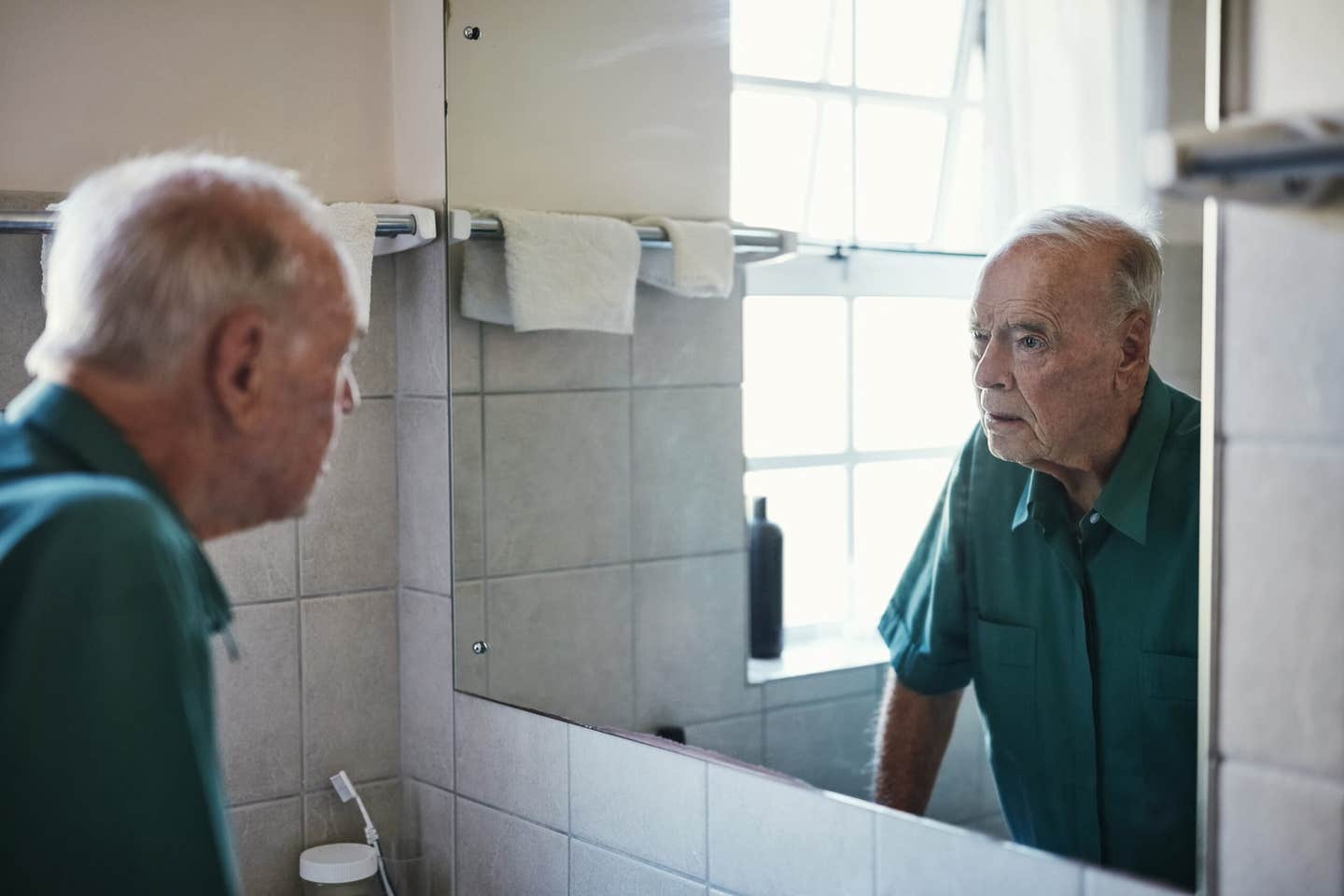500-year-old compass found in Poland may have belonged to Copernicus
This rare find, made near the remains of a 16th-century canonry, could open new windows into how Copernicus studied the skies.

Archaeologists in Frombork uncovered a 500-year-old compass possibly linked to Copernicus. (CREDIT: CC BY-SA 4.0)
A bronze compass, possibly used by one of history’s greatest astronomers, was recently uncovered during an archaeological dig in northern Poland. This rare find, made near the remains of a 16th-century canonry, could open new windows into how early scientists like Nicolaus Copernicus studied the skies.
The instrument was located last weekend in the gardens surrounding Frombork Cathedral using ground-penetrating radar. The tool that led to the discovery was part of a larger search aimed at uncovering underground architectural relics. Along with the compass, archaeologists also unearthed a corner of a collapsed building and the entrance to its long-lost cellars.
Unearthing a Legacy in Metal
The newly found compass is of the crowfoot type, commonly used in the 1500s for astronomical, geodetic, and cartographic measurements. Zorjana Polenik of the Nicolaus Copernicus Museum in Frombork said the compass dates back to the same century as Copernicus himself. It features hinged arms ending in blades, and earlier examples even include tiny engraved symbols, such as a star inside a circle.
Although there is no direct proof that the compass belonged to Copernicus, its location and age suggest a strong historical connection. Polenik said, “Of course, we do not know whether it could have belonged to him,” but she emphasized the importance of such instruments in celestial research.
This isn’t the first compass of its kind found in Frombork. A similar one was discovered in 2016 in the same gardens and currently resides in the museum's history of astronomy exhibit. Before this weekend’s find, only two 16th-century instruments like it were known in Poland. The first was uncovered in 2005 in the northern courtyard of the Collegium Novum at Jagiellonian University in Kraków.
Rediscovering Copernicus’ Tools
The discovery has stirred excitement not just for its historical value but for the glimpse it offers into the scientific methods of a man who revolutionized astronomy. Misja Skarb, a member of the Warminska Grupa Eksploracyjna—the group behind the radar sweep—said, “This astounding find takes us back to the era when Copernicus made his revolutionary discoveries... and opens up new possibilities for understanding his methods of work.”
Related Stories
Some historians think the tool may have been used on a structure called a pavimentum, a flat platform likely located near Copernicus’ residence in Frombork. This platform would have served as a base for setting up measuring devices aimed at tracking the movements of celestial bodies.
While no remains of the pavimentum have yet been found, the presence of high-precision tools strengthens the case for its past existence.The compass was found in a trial excavation, not far from where Copernicus is buried. In 2008, DNA tests confirmed that bones discovered beneath the cathedral belonged to the famed astronomer.
The Sun Moved—and So Did the World
Nicolaus Copernicus lived in Frombork for nearly 30 years, starting in 1510, after studying at the University of Kraków and other European institutions. His position as a canon of Warmia gave him the freedom to pursue his scientific passions in his spare time, despite the demands of church administration.
It was in Frombork where he refined and eventually published his most important work, De revolutionibus orbium coelestium (On the Revolutions of the Heavenly Spheres), just before his death in May 1543. In this book, he outlined the heliocentric theory—the bold idea that the Earth and other planets orbit the Sun, not the other way around.
That simple shift in thinking launched a scientific revolution. Although the Catholic Church banned his work in 1616 for contradicting scripture, his model laid the foundation for modern astronomy and space science.
Polenik noted that while it’s unlikely the compass was Copernicus’ personal possession, the area in which it was found makes it highly plausible that he or one of his colleagues used it.
Hidden Passages and War’s Impact
Local legends speak of secret tunnels connecting Copernicus’ private residence to the cathedral. The radar scan, which revealed several underground chambers and tunnels, adds a layer of intrigue to these stories. One of these tunnels is where the compass was located.
Frombork Castle, where Copernicus conducted much of his work, has weathered more than just the test of time. During the 1520s, wars with the Teutonic Knights forced Copernicus to flee. But he later returned to complete his life’s work. The castle itself, a mix of religious and scientific history, remains a site of deep national pride and international curiosity.
After its discovery, the compass was sent to the Poland Conservator of Monuments for testing and preservation. Once restoration is complete, it’s expected to join the Nicolaus Copernicus Museum’s growing collection of 16th-century instruments.
A Rare Glimpse into the Past
The story of this find is more than just about a compass. It’s about connecting with the physical world of a scientist who changed our view of the universe. Tools like this remind us that groundbreaking ideas often begin with simple, handmade instruments—carefully crafted, and patiently used under the open sky.
As archaeologists continue their work in Frombork, they hope to uncover more items tied to Copernicus’ life and methods. With every dig, the lines between history, legend, and discovery blur just a little more—each unearthed item a step closer to understanding how one man, with the help of humble tools, changed the heavens forever.
Note: The article above provided above by The Brighter Side of News.
Like these kind of feel good stories? Get The Brighter Side of News' newsletter.



